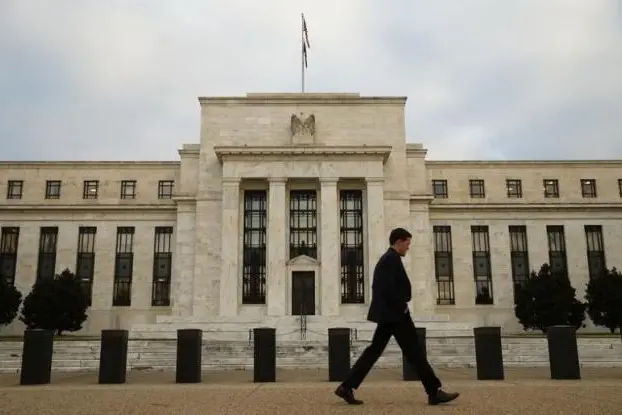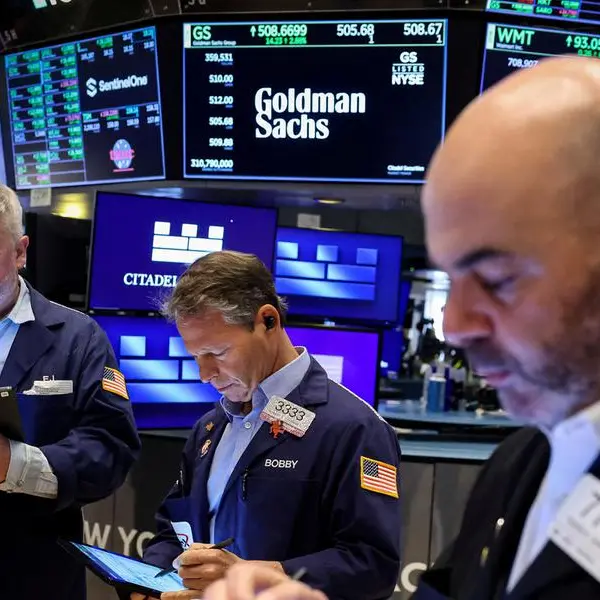PHOTO
After a year in which a U.S. inflation surge forced the Federal Reserve to supersize its interest rate hikes, the latest evidence price pressures are now abating will allow for smaller increments in 2023, but any cause for early celebrations remains tempered by a tight labor market that is juicing wage growth.
The latest Personal Consumption Expenditures (PCE) price index, released on Friday, bolstered central bank hopes the worst of the torrid spike in inflation is firmly in the rearview mirror.
The Fed's preferred inflation gauge increased 0.1% last month on a month-to-month basis, down from the 0.4% monthly increase in October. It increased 5.5% on a year-to-year basis in November, down from 6.1% in October.
Excluding the volatile food and energy components, the PCE price index was up 0.2% in November, down from 0.3% the prior month. It increased 4.7% in the 12 months through November, compared to a 5.0% year-on-year rise in October. But that's still much higher than the Fed's 2% target.
"The equity markets have it wrong in that they think the Fed is going to stop and eventually cut interest rates later in 2023. And, right now, I don't see that happening anytime soon," said Paul Nolte, a portfolio manager at Kingsview Asset Management.
The second straight month of yearly PCE index declines follows on from the smallest annual increase in inflation in nearly a year in November in another closely watched measure.
The easing of the pace of price increases allows the Fed to start next year on the front foot, although Fed Chair Jerome Powell cautioned last week that while recent inflation measures are welcome the central bank still needs "substantially more evidence" to feel confident it is on a sustained path down. There are two more key inflation reports before the Fed's next policy meeting that concludes on Feb. 1.
The central bank last Wednesday hiked its policy rate by 50 basis points to a 4.25%-4.50% range, the highest since late 2007. Fed officials expect the rate to rise to between 5.00% and 5.25% next year.
However, investors in futures contracts tied to the Fed's benchmark overnight interest rate remain doubtful the policy rate will get that high. After the release of Friday's data, despite a slight increase in bets for a bigger February hike and higher terminal rate, they were still pricing in a quarter-percentage-point hike at the Fed's next policy meeting and a peak in interest rates at 4.75-5.00%.
FIGHT NOT OVER YET
The Fed is raising borrowing costs to bring down inflation by trying to reduce demand across the economy, relieving what has been intense competition for everything from workers to goods and homes.
While the housing market has been hard hit by higher interest rates and goods inflation has been easing, Fed policymakers remain concerned by the strength of the labor market and the stickiness of service sector and wage inflation.
A still too-tight labor market is helping to underpin the economy by generating solid wage gains, which are contributing to higher consumer spending. The unemployment rate, at 3.7%, has barely risen from a 50-year low of 3.5% as firms continue to compete for a limited supply of workers.
The number of Americans filing new claims for unemployment benefits increased less than expected last week while the economy rebounded faster than previously estimated in the third quarter, separate government reports showed on Thursday.
"The Fed is very certain it needs to loosen labor markets to prevent another year of rapid wage growth," said Tim Duy, an economist at SGH Macro Advisors. "If unemployment doesn't start rising soon, the Fed will either take policy rate projections up another leg higher or push back the timeline for cooling the labor market."
(Reporting by Lindsay Dunsmuir; Additional reporting by Bansari Mayur Kamdar; Editing by Andrea Ricci)





















